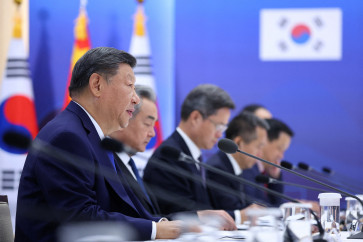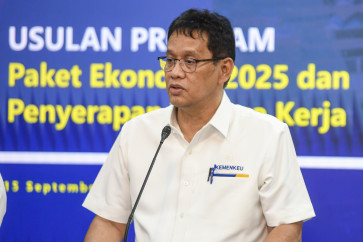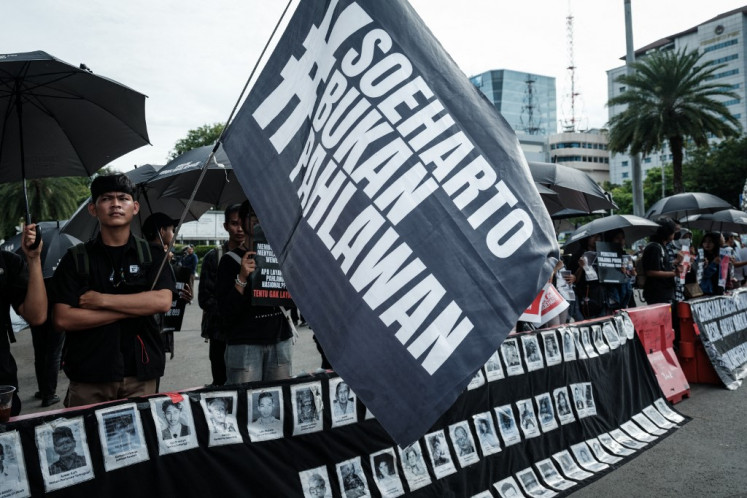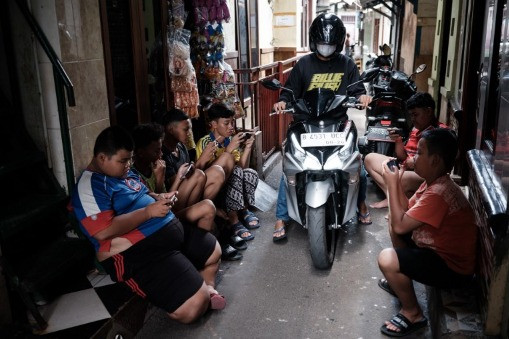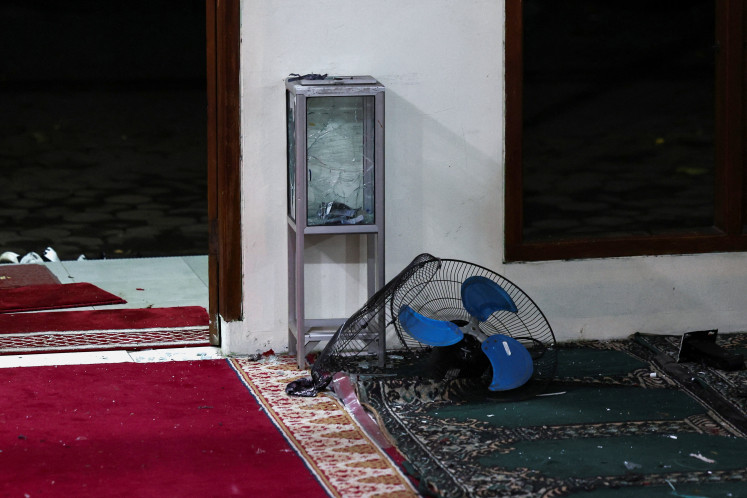Popular Reads
Top Results
Can't find what you're looking for?
View all search resultsPopular Reads
Top Results
Can't find what you're looking for?
View all search resultsPertamina offers better price for 1.5m tons of LNG from Tangguh
State oil and gas firm PT Pertamina says that it is ready to buy liquefied natural gas (LNG) from the Tangguh LNG plant in Papua, which is allocated for Fujian in China, for three times higher than the current listed price
Change text size
Gift Premium Articles
to Anyone
S
tate oil and gas firm PT Pertamina says that it is ready to buy liquefied natural gas (LNG) from the Tangguh LNG plant in Papua, which is allocated for Fujian in China, for three times higher than the current listed price.
The LNG would be used to fill the floating storage and regasification unit (FSRU) in Jakarta Bay, which was estimated to begin commercial operations in February next year, Pertamina spokesman Mochamad Harun told reporters on Thursday.
“We really hope we can buy the gas from Tangguh. We are willing to pay three times more than the current price of US$3.40 per million British thermal units [mmbtu], or around $10 per mmbtu,” he told a media gathering in Jakarta.
Pertamina aimed to buy 1.5 million tons of LNG per year from the Tangguh Plant, he continued.
With that additional supply, the Jakarta Bay receiving terminal will operate at its full capacity of 3 million tons per year, as Pertamina has also secured a commitment of 1.5 million tons per year from the Bontang LNG plant in East Kalimantan.
The receiving terminal is jointly owned by Pertamina (60 percent) and state gas distributor PT PGN (40 percent).
The gas will then be bought by state electricity utility PT PLN, which currently faces difficulties in obtaining additional gas supplies for its gas-fired power plants.
“With a better price, the operator of the Tangguh plant [BP] will obtain benefits because the project will be more economical. The government will also receive more revenue from the gas sales. We can also reduce the subsidy for PLN,” Harun emphasized.
He revealed that the FSRU was 80 percent complete and was being manufactured at a shipyard in Batam, Riau Islands. All the necessary infrastructure would be installed in Jakarta Bay in January, he added.
“After that, we will do the commissioning for a month; therefore, the first gas delivery can take place by the end of February,” Harun explained.
The LNG delivery to Fujian, with a total volume of 2.6 million tons per year, has been under the spotlight over the past several years due to its contract price, which is considered too low.
The government signed a contract to deliver LNG to Fujian province in 2002 for $2.4 per mmbtu, regardless of any increases in crude oil prices. In 2006, the price was revised to $3.4 per mmbtu, which critics said was still too low.
PLN’s division head for gas and oil-based fuels, Suryadi Mardjoeki, reported the formula to determine the price of gas from the Jakarta Bay receiving terminal had been agreed. The price would be influenced by the Indonesian crude price (ICP) and the transportation and regasification costs.
“If the ICP is $90 per barrel, the price of gas may be between $12 and $12.5 per mmbtu,” he said.
Separately, the spokesman for upstream oil and gas regulator BPMigas, Gde Pradnyana, told The Jakarta Post the decision as to whether Pertamina could buy the LNG was in the government’s hands.
“PLN had also expressed the same intention to buy back the LNG allocated for Fujian. However, only the government has the right to decide what we can do with the gas,” he said in a telephone interview.
There were two ways Pertamina could buy the gas from Tangguh, he continued.
The first way would be if Pertamina directly purchased the gas from the buyer [Fujian], while the second way would require the government to cancel the contract with Fujian and give the gas to Pertamina.
“But for the second alternative, Pertamina has to be ready to pay the penalty because it will influence the price the company pays,” Gde revealed.
The Tangguh LNG plant consists of two production units with a capacity of 3.8 million tons per year. BP started production at train 1 in February 2009, and at train 2 in July 2009.
Currently, all the LNG produced at the plant is allocated for export. In addition to the 2.6 million tons per year allocation for Fujian, some 3.6 million tons of LNG is sent to Sempra Energy in the US and 1 million tons to South Korea.
BP has also announced its plan to construct a third train in Tangguh. The train will have a total capacity to produce 3.8 million tons of LNG per year. The train is scheduled to begin commercial operations in 2018.
According to BPMigas, Indonesia’s gas production has grown vigorously since 2007. Production hit 7,460 million standard cubic feet per day (mmscfd) in 2008, up from 7,283 mmscfd a year earlier; then jumped to 7,962 mmscfd in 2009, and 8,888 mmscfd last year.



